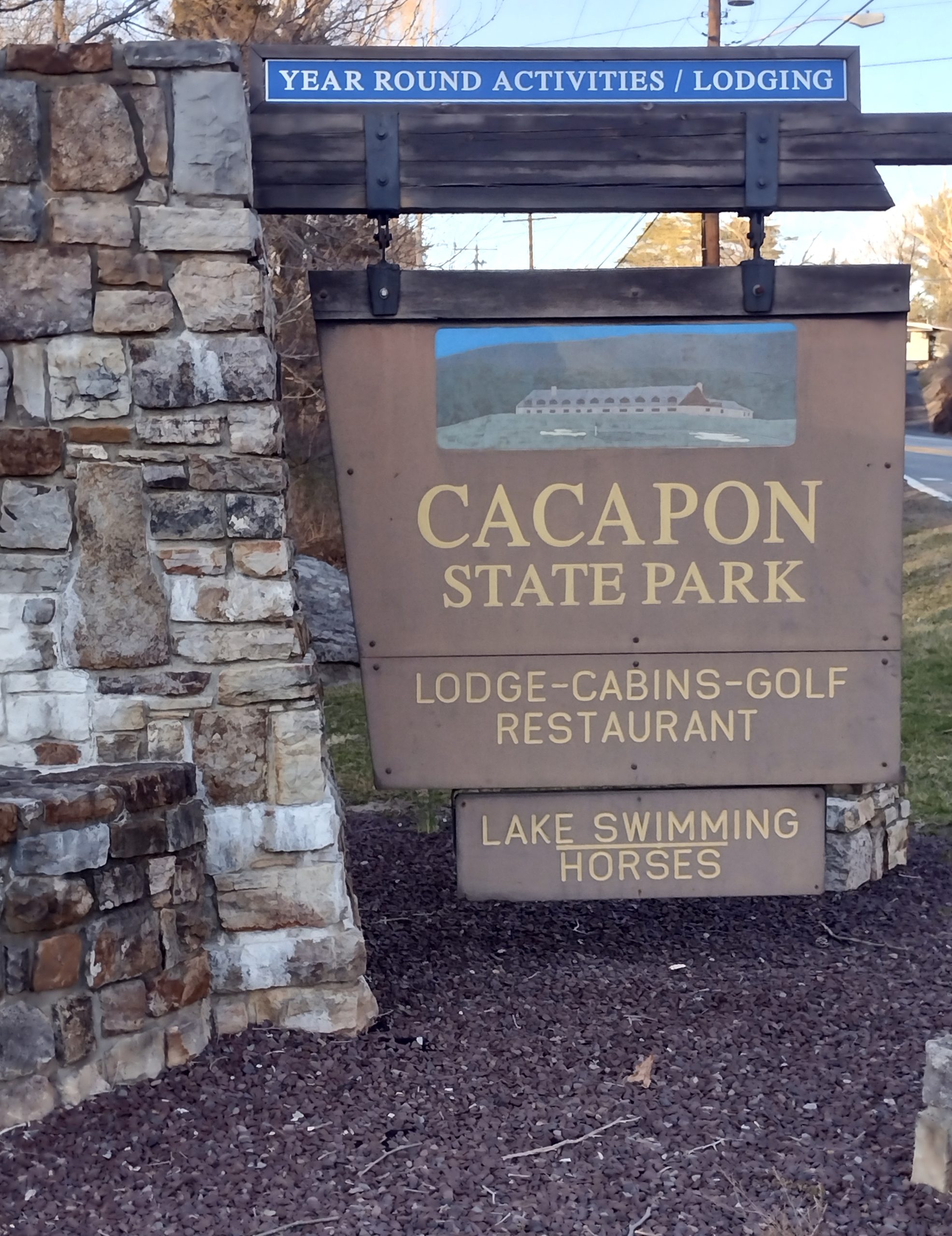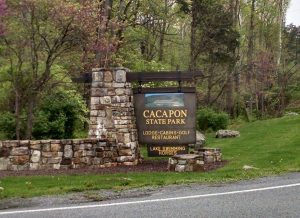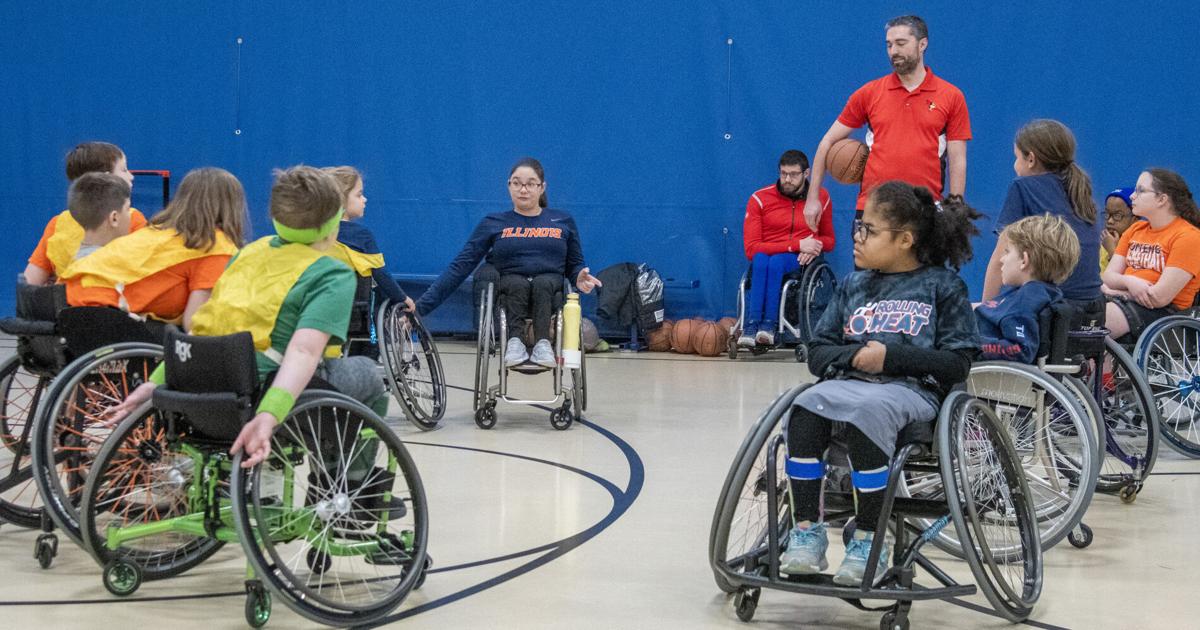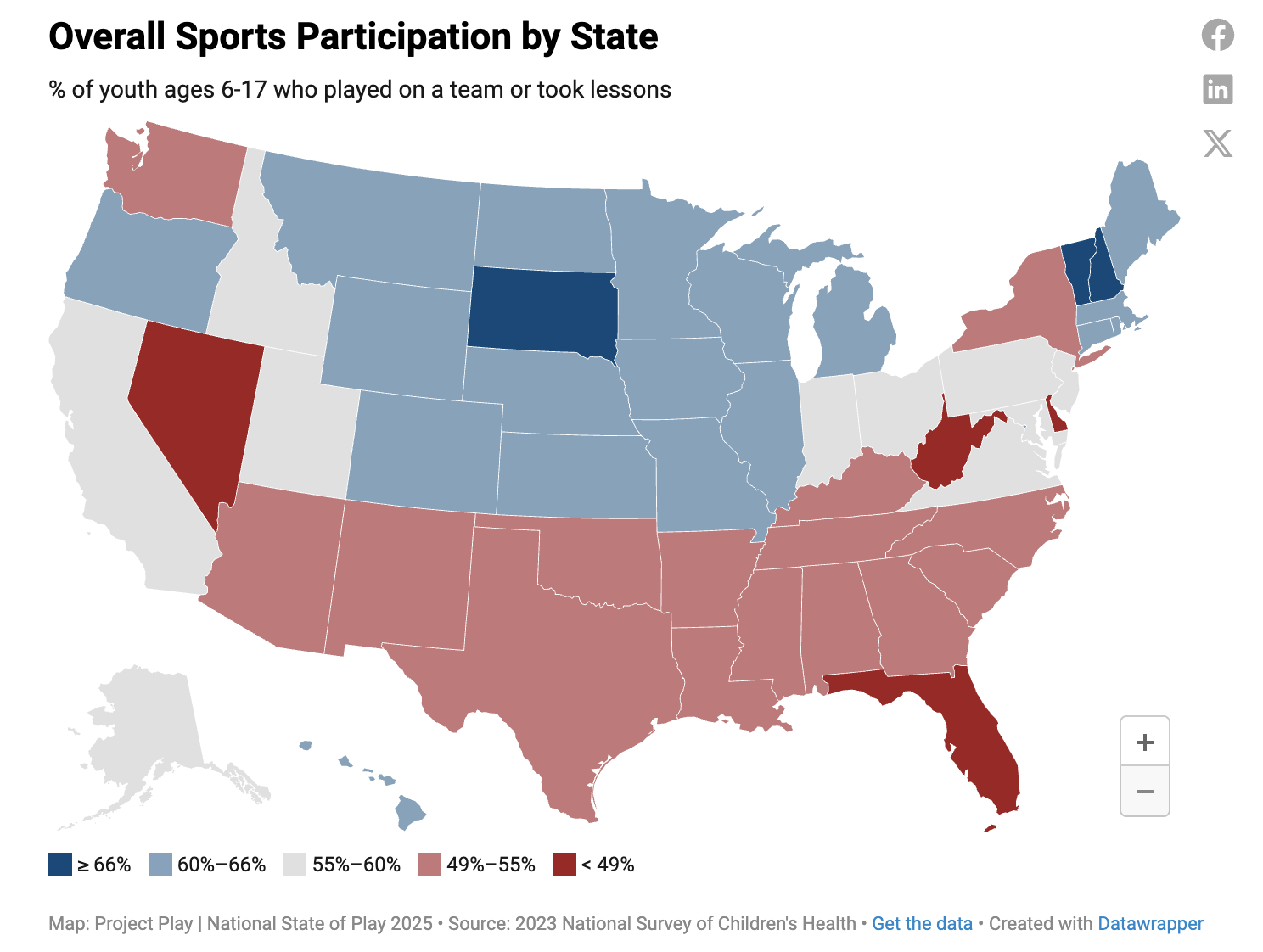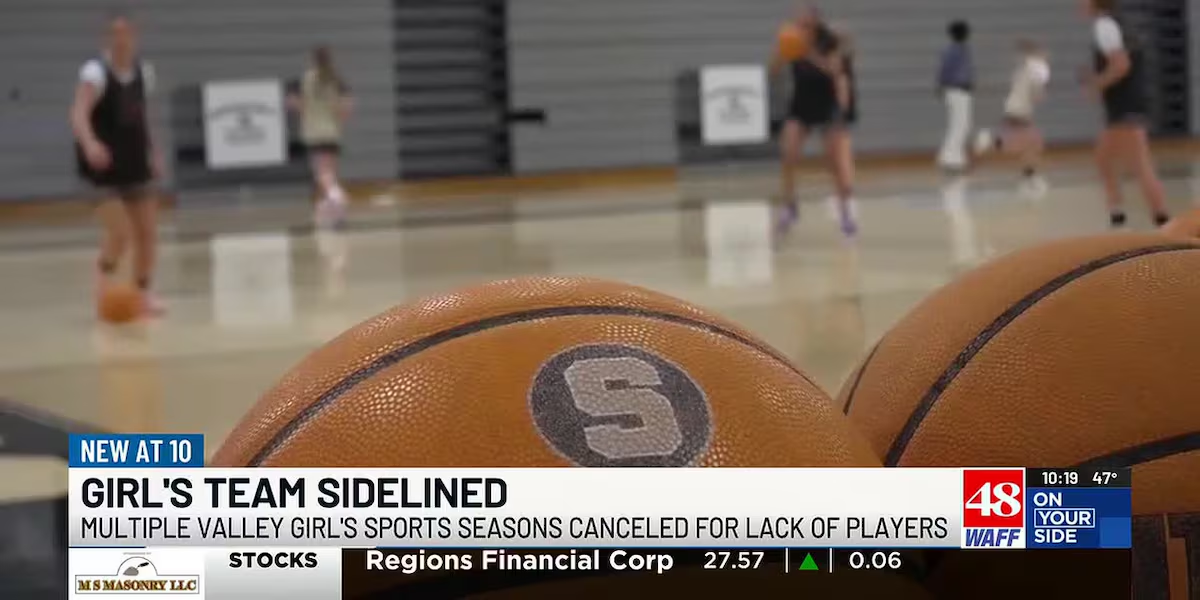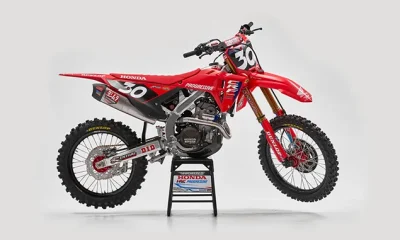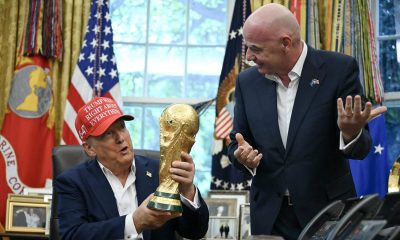
Canaan Shaffer tries to shoot over defender Kylie Ritz during practice Monday for the Rolling Heat, the Stephens Family YMCA wheelchair basketball program for children ages 6-13, in the gym at the facility in southwest Champaign.
To subscribe, click here.
Want to purchase today’s print edition? Here’s a map of single-copy locations.
Sign up for our daily newsletter here
CHAMPAIGN — Kylie Ritz was new to wheelchair basketball in 2024 when she participated in her first game.
Her Rolling Heat team was playing at a tournament in Madison, Wis.
“The ball was tossed in the air for the tip off,” Kylie said. “We got it, we dribbled down the court and I made my first basket. I was just so excited.”
Kylie, who has played softball and standup basketball in the past, had found her sport … and long-term goal: to someday compete on the U.S. Paralympic team. After, of course, playing for the University of Illinois wheelchair team.
A 12-year-old sixth-grader at Jefferson Middle School, Kylie is a star player for the Rolling Heat, the team started in 2022 by Larkin’s Place Director Alyssa Anderson — who also serves as team director.

Assistant Coach Stefan Ritz, standing, talks to the team during practice for the Rolling Heat, the Stephens Family YMCA wheelchair basketball program for ages 6-13. At the YMCA in Champaign on Monday, Dec. 8, 2025.
From humble beginnings of three players in its first year, the Stephens Family YMCA program has expanded to its current 20. And they’re looking for more.
“We’re all over,” Anderson said. “We have kids driving in from Peoria, Argenta, Sullivan, Wapella, all within an hour and a half of here.”
Practices are held on Mondays at the Stephens Family Y.
What does Kylie remember about her first practice?
“I was kind of nervous, kind of excited,” she said. “I wasn’t sure if I was going to like it.”
She did. And does.
The team just returned from a tournament in the Madison area, where it went 2-2.
If you go to a game, you will notice Kylie — for both her skill and on-court personality.
“I am very aggressive, very talkative, very loud,” she said.
Her teammates look to Kylie for leadership.
Ask Kylie about her strength as a player, and the answer isn’t shooting or passing.
“The most important qualities of a basketball player are being coachable and being a team player,” Kylie said. “Without your team, you can’t play. And if you’re not coachable, you’re never going to learn anything new.”
Kylie’s parents, Stefan and Monica, are all for her time with the Rolling Heat.
“She has found something she is extremely passionate about,” Stefan said. “She has put a ton of work into this.”
This year, Stefan is helping coach the team. Kylie’s sister Rosie, 7, is also in the program. Sisters Ella, 8, and Evie, 5, were on the trip to Madison.
The Ritz family is sold on the program.
“I think it’s a great opportunity for a lot of these athletes to go out there and get all the good things that sports offers,” said Stefan, who is a teacher at Rantoul Township High School. “A lot of our athletes don’t have a ton of options like this. There is a need for more good, adaptive sports. I think this is a great opportunity for all of them to get the same benefits that any other young athlete can get from playing a sport.”

Coach Kaitlyn Eaton gives instruction during practice for the Rolling Heat, the Stephens Family YMCA’s wheelchair-basketball program for youths ages 6-13.
The right leader
When Anderson got the go-ahead to start the program, one of the first orders of business was finding a coach.
She turned to former UI wheelchair standout Kaitlyn Eaton, a two-time Paralympian.
The Houston native played on the UI wheelchair team from 2012-17. After graduation, she remained in C-U and was an assistant on the UI team from 2017-20.
She played in Paralympic Games at Tokyo in 2020 and Paris in 2024, winning bronze and silver medals.
How did she react when asked to coach the Rolling Heat?
“Obviously, I was excited,” Eaton said. “The Champaign-Urbana community has done so much for people with disabilities. The UI has done a lot for people with disabilities.
“I think all of the athletes that have come through here and played for the UI have known this community needed something like this.”

Dexter Campbell smiles after successfully passing to Rowan Smith. A gallery from Monday’s Rolling Heat practice is available at news-gazette.com.
The Rolling Heat created an opportunity that doesn’t exist in the rest of downstate Illinois.
“I was excited they were willing to start up a program.” Eaton said. “They had great backing with the YMCA, so that’s awesome.”
Eaton said she wasn’t sure “how good of a coach I would be with young kids.”
“It was something new for me,” she said. “I didn’t know really what to do or what to expect.”
Three years in, it’s going well.
“It’s been fun,” Eaton said. “I’ve learned a lot as a coach and I’ve learned how to talk to the kids and teach them in the best way I know how.”
The difference in the team’s skill level now compared to the beginning is “night and day,” she said.
“I think it’s cool. We’ve seen a lot of growth with the kids,” Eaton said. “They are starting to understand concepts now.”
A year ago at the same tournament, one of the players, Carter, froze every time he got the ball.
Afterward, Eaton sat in the hallway with him and taught him how to dribble and push at the same time.
“Now, Carter is one of our top scorers,” Kaitlyn said.
There are many other stories of players showing improvement.
“It’s one of those things in wheelchair basketball it is waiting for the light bulb to go off,” Eaton said. “We’re seeing the light bulbs go off pretty consistently right now.
“They get so excited. The smiles on their face when they win a tough game or when one of their teammates does something incredible is awesome.”
Winning is fun. But it’s not the driving force.
“At the end of the day, the best part about wheelchair basketball is the community it provides,” Eaton said. “They get to make friends and be with other kids that have disabilities too.”
The players are big fans of Eaton.
“She is very helpful,” Kylie said. “She’s taught us a lot of defensive strategies.”
Eaton challenges the players — in a good way.
“We’re fortunate that we have really good kids on our team,” she said. “They’re really kind, they’re really incredible about accepting new people. They make it a really welcoming environment.”

Zeke Arnold, right, and Victor Rafferty take a break during practice for the Rolling Heat, the Stephens Family YMCA wheelchair basketball program for ages 6-13. At the YMCA in Champaign on Monday, Dec. 8, 2025. Zele’s father said they had just returned from a weekend of playing sled hockey in Chicago.
Making it work
There had been other attempts in the past to start a wheelchair program in C-U. None took, until now.
“We’re building something incredible here in Champaign,” Eaton said. “The YMCA really did take a gamble. There wasn’t a lot to show that this would work. A lot of credit to them and a lot of credit to our director Alyssa. She has put a lot on the back end to make this happen by getting sponsorships and finding kids, finding parents, really persuading them to show up.”
When she started at Larkin’s Place, Anderson identified a need for adaptive sports opportunities for kids with physical disabilities.
She went to her bosses at the Y, Jeff Scott and Jeff Dobrik, and asked to start a youth wheelchair-basketball team.
“They said, ‘Great,’” Anderson said.
She suggested it might take a while to get it going. They said, “Let’s start now.”
She turned to the UI Division of Rehabilitation Services, which put her in touch with Eaton.
At first, none of the players had ever been in a sports chair.
In order to grow, Anderson knew the Rolling Heat needed sponsorships. A sports chair costs about $5,000.
“This was a huge investment, and not something we necessarily had in the budget,” Anderson said.
She contacted the C-U Elks, which administers a trust. The organization provided $35,000 — enough to buy six sports chairs, a trailer and jerseys.
The Rolling Heat registered with the National Wheelchair Basketball Association as a prep team. There are 65 teams across the country.

Paralympic athlete Daniel Romanchuk, 2-time World Champion/World Record Holder and 4-time Paralympic Medallist, left, chats with Aria Panika during practice for the Rolling Heat, the Stephens Family YMCA wheelchair basketball program for ages 6-13. At the YMCA in Champaign on Monday, Dec. 8, 2025.
Playing at the prep level (middle school and younger), the team competed in four tournaments last season, none of them in Illinois. The Rolling Heat have six tournaments this season, which extends into March.
“This wouldn’t be here without the kids,” Anderson said. “They are such an amazing group of kids. It is such a cool experience for this community to be together,”
There are four teams in Illinois, with the closest in New Lenox, near Joliet.
Tournaments this season are scheduled in Wisconsin, Missouri, Illinois and Indiana.
“Some of these parents are committing to eight-hour round trips,” Anderson said.
She was motivated in part by her daughter Millie, almost 5, who has spina bifida. Millie is planning to play for the Rolling Heat.

Head Coach Kaitlyn Eaton, center in Illinois shirt, and Assistant Coach Stefan Ritz, standing, talk to the team during practice for the Rolling Heat, the Stephens Family YMCA wheelchair basketball program for ages 6-13. At the YMCA in Champaign on Monday, Dec. 8, 2025.
Going all in
Emma Six, 11, is one of the original five players for the Rolling Heat. Her family travels to practices from their home in Decatur.
Emma is in her fourth year as a player.
“We were looking for something for her to try that was adaptive,” said her mom, Courtney. “They were very, very new. It was nice to go in and everyone was at the same level.”
Emma’s interest in the game was immediate.
“She looked forward to waking up on those days of practice,” Courtney said.
She can’t wait to play.
“I get excited,” Emma said.
One of her strengths is shooting. She made three baskets during one of the weekend games. The scores are generally in the upper 20s.
Like Kylie, Emma wants to play for Team USA — like their coach.
Emma said she has made many friends, both on her own team and among her opponents.

ABOVE: Victor Rafferty, left, and Rowan Smith go for the ball on the floor during practice for the Rolling Heat. BELOW: Four-time Paralympic medalist Daniel Romanchuk chats with Rolling Heat participant Aria Panika during practice.
“We joke that we have to drive three to five hours to hang out with some of our friends,” Courtney said. “I like the camaraderie of it all. All of us walking different paths in life and these kids have a wide range of different disabilities. It’s really cool to see them find their place on the team.”
Emma’s dad, Cody, was equally enthusiastic.
“I think it’s neat because of the wide age gap of the kids, seeing them develop at different speeds and grow together,” he said.
The families have to pay for their own travel and will spend $4,000 to $5,000 in expenses.
“It’s a big commitment for these families,” said Courtney, who is a paraprofessional aid for Argenta-Oreana Elementary. Cody is a shift supervisor at Primient in Decatur.
Emma is a sixth-grader at Argenta.

